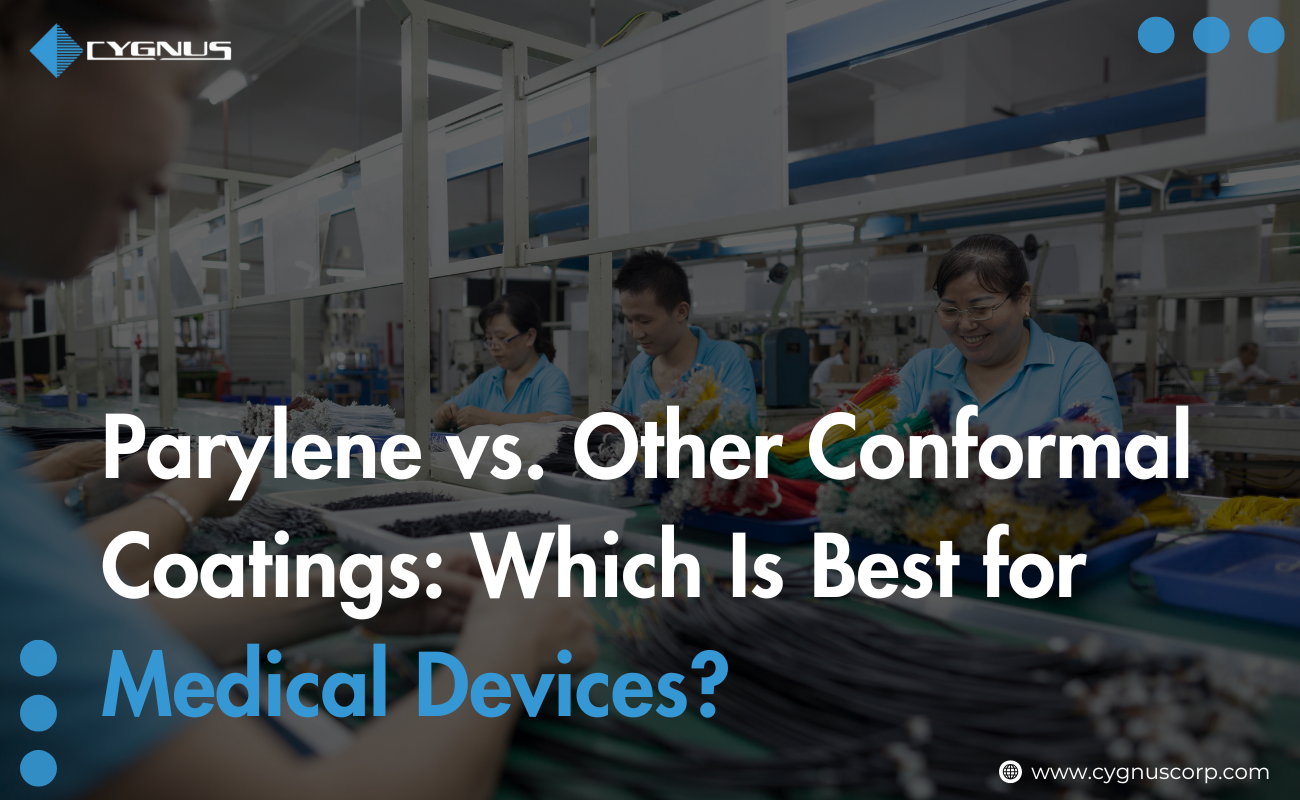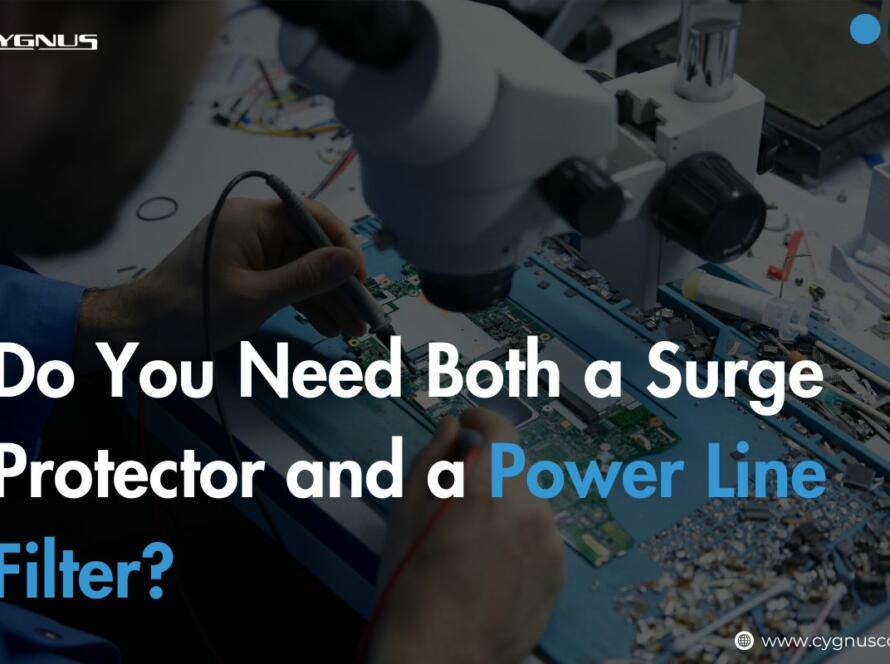Medical devices need to be precise, reliable, and safe for patient use. One often-overlooked factor that plays a huge role in achieving this is the protective coating applied to the device.
When comparing Parylene vs other conformal coatings, manufacturers often face the challenge of balancing performance, biocompatibility, and cost. This article breaks down the differences, highlights Parylene coating benefits, and helps you determine the best coating for medical devices in various applications.
Why Medical Devices Require Conformal Coatings?
Medical devices operate in environments where performance failure is not an option. Conformal coating types for healthcare are used to:
- Protect against moisture – Prevent corrosion and electrical shorts in electronics.
- Provide dielectric insulation – Avoid unintended electrical conductivity.
- Enhance chemical resistance – Shield devices from body fluids, sterilization chemicals, and cleaning agents.
- Ensure biocompatibility – Prevent toxic reactions when in contact with the human body.
Without proper coating, devices can fail prematurely, leading to costly recalls or, worse, patient harm. Regulations such as ISO 10993 for biocompatibility and FDA coating material requirements ensure medical devices meet strict safety standards.
Overview of Common Conformal Coatings:
Parylene Coatings:
Types: Parylene C, N, F, and HT.
Key properties: Ultra-thin, pinhole-free, highly biocompatible, excellent moisture barrier, and chemical resistance.
Typical applications: Catheters, stents, pacemaker components, diagnostic sensors, and implantable devices.
The unique vapor deposition process ensures Parylene coating applications in medical devices can cover even the most complex geometries without gaps.
Epoxy Coatings:
- Advantages: Strong adhesion, good chemical resistance.
- Drawbacks: Thick application, potential brittleness, less flexibility for micro-scale electronics.
Acrylic Coatings:
- Advantages: Low cost, quick application.
- Drawbacks: Limited chemical and moisture resistance, lower durability in high-performance medical devices.
Silicone Coatings:
- Advantages: High flexibility, excellent temperature resistance.
- Drawbacks: Less abrasion resistance, thicker coating layers.
Polyurethane Coatings:
- Advantages: Good solvent resistance, strong hardness.
- Drawbacks: May not be fully biocompatible, thicker profile compared to Parylene.
Side-by-Side Comparison: Parylene vs. Other Coatings
| Property / Feature | Parylene | Epoxy | Acrylic | Silicone | Polyurethane |
| Biocompatibility (ISO 10993) | ✅ Excellent | ❌ Variable | ❌ Variable | ✅ Good | ❌ Variable |
| Moisture Barrier | ✅ Excellent | ✅ Good | ❌ Fair | ✅ Good | ✅ Good |
| Coating Thickness | Ultra-thin (microns) | Thick | Medium | Medium | Medium |
| Adhesion to Complex Shapes | ✅ Excellent | ✅ Good | ❌ Fair | ✅ Good | ✅ Good |
| Temperature Resistance | ✅ High | ✅ High | ❌ Low | ✅ Very High | ✅ High |
| Cost | Higher | Medium | Low | Medium | Medium |
This medical device coating comparison shows that while other coatings have advantages in certain areas, Parylene’s all-round performance makes it stand out—especially for high-reliability medical applications.
Why Parylene Often Wins for Medical Devices?
Superior Biocompatibility:
Parylene meets ISO 10993 and USP Class VI standards, making it one of the most trusted biocompatible coatings for medical equipment. It’s safe for implants and long-term skin contact.
Exceptional Moisture & Chemical Resistance:
Thanks to its pinhole-free, ultra-thin layer, Parylene shields sensitive electronics and micro-mechanisms from moisture and chemicals, even in harsh bodily environments.
Uniform Coating on Complex Geometries:
Its vapor deposition process allows Parylene to coat inside crevices, lumens, and complex shapes—critical for minimally invasive and implantable devices.
Long-Term Reliability in Harsh Environments:
From gamma radiation to autoclave sterilization, Parylene remains stable without degrading, making it ideal for reusable and implantable devices.
When Other Coatings Might Be a Better Fit?
While Parylene offers unmatched protection, there are scenarios where other coatings may be more practical:
- Cost-sensitive projects where short-term device lifespan is acceptable.
- Non-implantable devices that don’t require maximum biocompatibility.
- Short product lifecycles where high-end coating durability isn’t essential.
Final Verdict – Which Should You Choose?
If your goal is ultimate reliability, safety, and performance, especially in Parylene coating applications in medical devices like implants or precision surgical tools, Parylene stands out as the clear winner.
For less critical devices where budget is a key factor, acrylic or silicone may suffice—but be aware of the trade-offs in durability and safety. Consulting with coating specialists will ensure you choose the best coating for medical devices for your specific use case.
FAQs – Parylene vs Other Conformal Coatings
Q1: Is Parylene coating safe for implantable medical devices?
Yes. Parylene meets ISO 10993 and USP Class VI biocompatibility standards, making it suitable for long-term implantation without harmful side effects.
Q2: How does Parylene compare to silicone coating in medical devices?
Parylene offers a thinner, more uniform barrier with superior moisture resistance, while silicone is more flexible and can be more cost-effective for short-term applications.
Q3: Does Parylene coating increase the cost of medical devices?
Yes, but the Parylene coating benefits often outweigh the cost by significantly improving device lifespan and reliability, reducing failures and recalls.
Q4: Can Parylene-coated devices undergo sterilization?
Absolutely. Parylene withstands ETO, gamma, and autoclave sterilization without degradation, making it ideal for reusable medical devices.




